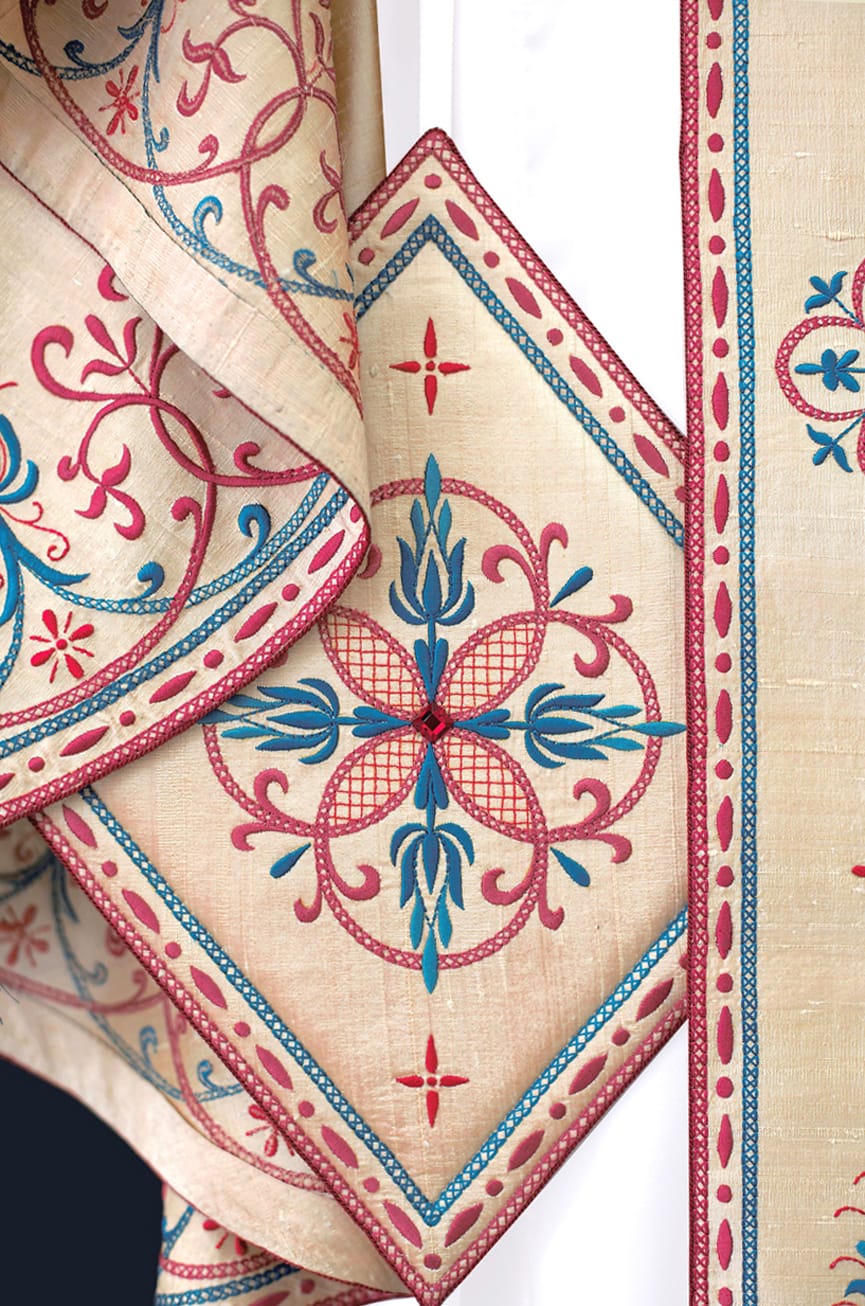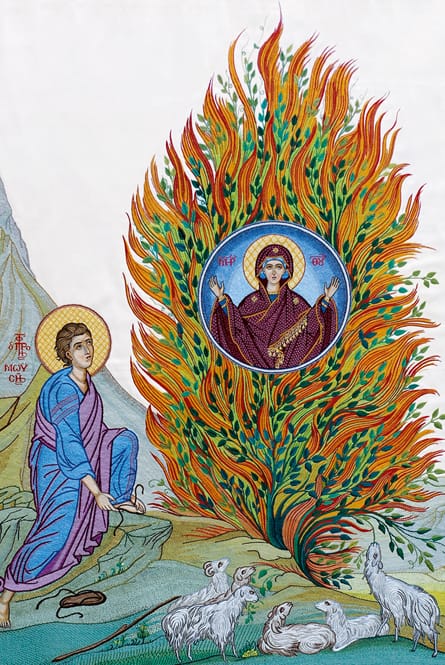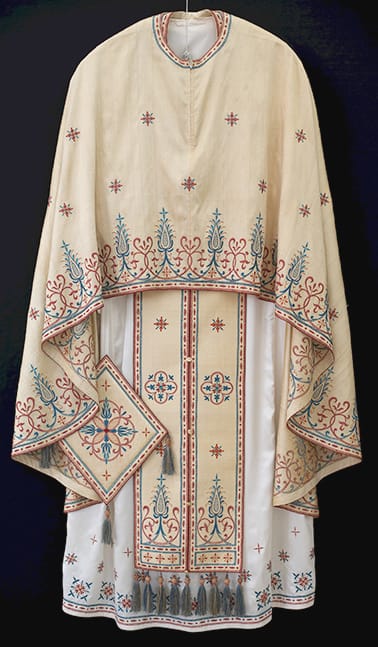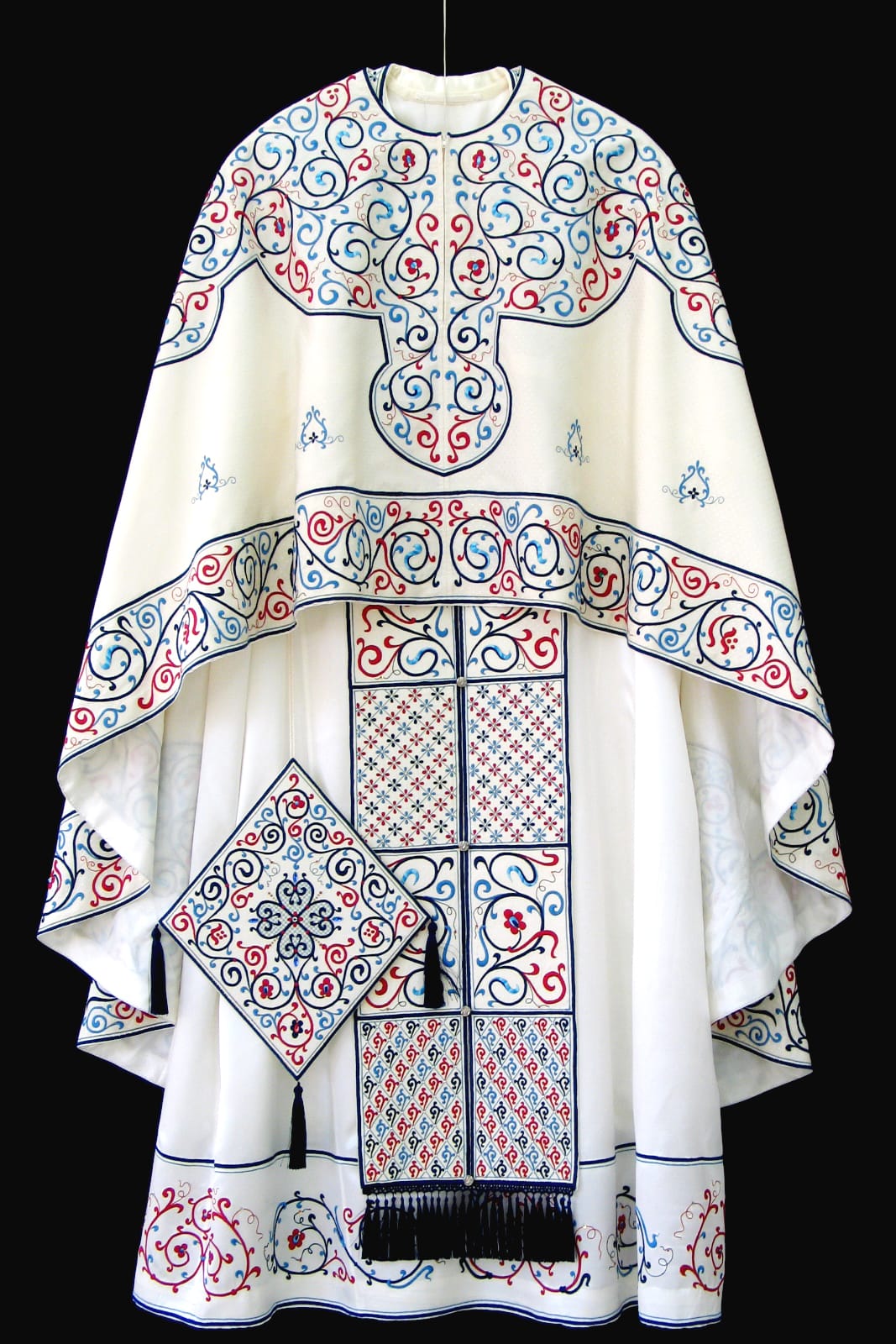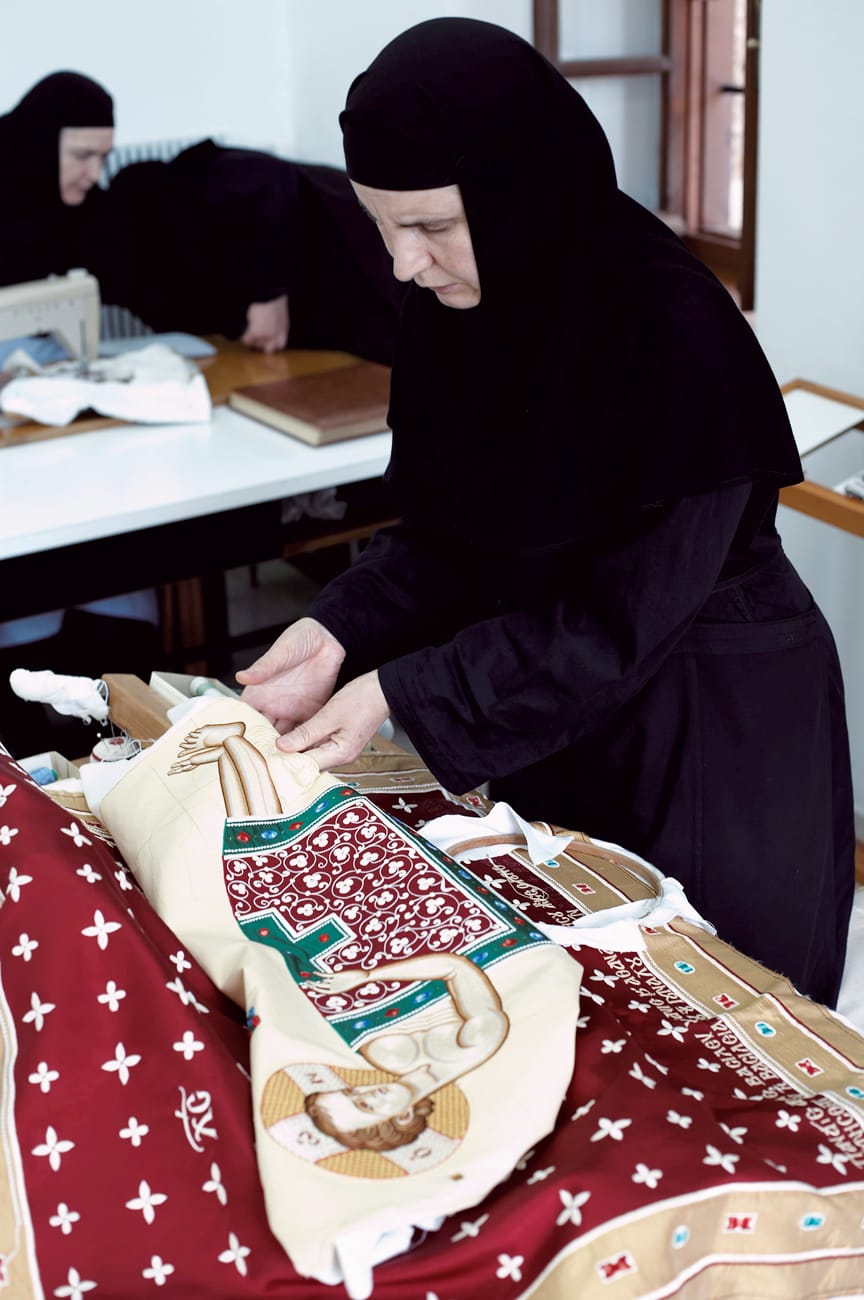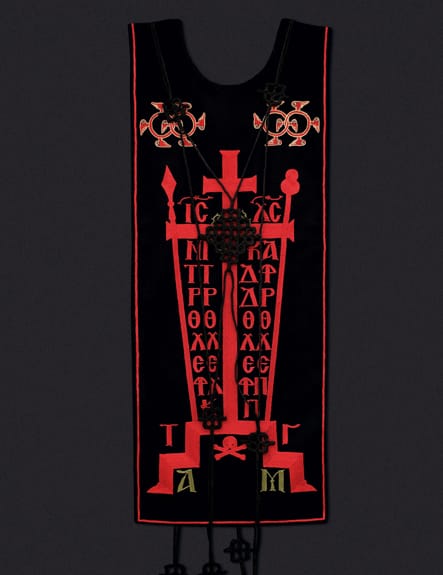Needlework Workshop
Whether hand- or machine- made, ecclesiastical and liturgical vestments (sticharia [alb], phelonia omophoria, mantles, epitaphios liturgical cloths, curtains or drapery panels, icon aprons, etc.) are manufactured using materials similar to those of old gold-embroidered vestments. Copies of old or partly adapted patterns of ancient relics, as well as original new compositions, are executed accurately, laboriously and dedicatedly, preserving stitching styles passed down from generation to generation.
The most demanding part of the entire work is the needlework required for depicting faces, particularly in tiny inlays and epitrachelions [stoles]. Spectators are impressed because needlework appears similar to brush strokes in colours that are imperceptibly alternated to depict almost immaterial faces, angels and saints.
Adornments (poikilmata – broderies) are made at a separate department of the needlework workshop, using sequins on small roots, coral, turquoise, pearls or imitation pearls, glass or semi-precious stones.
The Holy Coenobium Epitaphios ceremonial cloth is embroidered following the standards of old items from Athonitemonasteries or other heirlooms. It is entirely hand-embroidered using silk thread on a pure silk, red cloth made in double weave. Faces, hands and feet were made using the same thread, sometimes single and sometimes double-stranded, imitating the icon-making paint brush in direction and hue, so as to depict, within the limits of possibility, the experience of passion in facial expressions. The body of Christ is presented in the tomb, but his head is embraced on His Mother’s lap. Two angels stand at his feet and over his head, in awe and grief, while two more pairs of angels fly above his torso weeping and horrified. Below the tomb, there is a six-winged and a many-eyed angel. The scene is surrounded by a Byzantine-style decorative motif and has a star-spangled background, all of which are made using golden and purely white silk threads. The Virgin’s and angels’ attire is also embroidered with three-stranded silk thread, using colours appropriate for each face and appropriate for a scene of mourning. The inscription reads: “Funereal Lament” [Epitaphios Threnos]; “I.C. Ormylia βιε’”(Holy Coenobium, Ormylia 2015), in a discreet spot.
An excellent partial replica of the scene from the monumental painting has been transferred to an Archbishop’s cassock. It is the presentation of the Descent to Hades from the Chapel of the Chora Monastery, which adorns the back side of the vestment. The front side presents the scene of Nativity. The bright, joyful composition is harmoniously combined with the blue of the velvet background. The clothes of the figures are mainly embroidered using gold and silver threads. Fleshy parts are softly depicted in silk. The chest pieces of the four Gospel writers stand out for their expressiveness in the same composition.
Against a background of red satin (atlas), using the same technique, the figures of St. Basil and St. John Chrysostom are depicted on a pair of inlays for Simonopetra’s Father Superior’s mantle.
There is also an elaborate silk stole-”Prayer by the Holy Coenobium of Annunciation, Ormylia to Archimandrite Aimilianos”- depicting eight High Priests with the Annunciation at the top, while the neck part is adorned with multi-eyed cherubim, among whom Christ can be discerned, at the age of 12.
The Megaloschemon[Great Schema] and the Polystavrion [Many Crosses] that the monastics wear when they take their vows, and which they will always wear, are made by the hands of all the sisters. In their leisure time, combining the art of needlework with that of incessant prayer, the nuns, using red silk thread, embroider on the black background of the Great Schema, the Cross in the centre, flanked by the Lance on the right and the Sponge on the left. At the feet of the Cross lies Adam’s skull so that the Great Schema bears a symbol of the victory over death and the triumph of life.
The Polystavrion, also called Analavos [similar to the scapular], is the symbol of the Lord’s cross that every monasticcarries on his shoulders, and it is made with elaborate knots tied in the shape of the cross; these elaborate crosses are knitted using one’s fingers, and by knitting nine crosses per knot and connecting them komboskoinia, prayer ropes [rosaries] are made.
